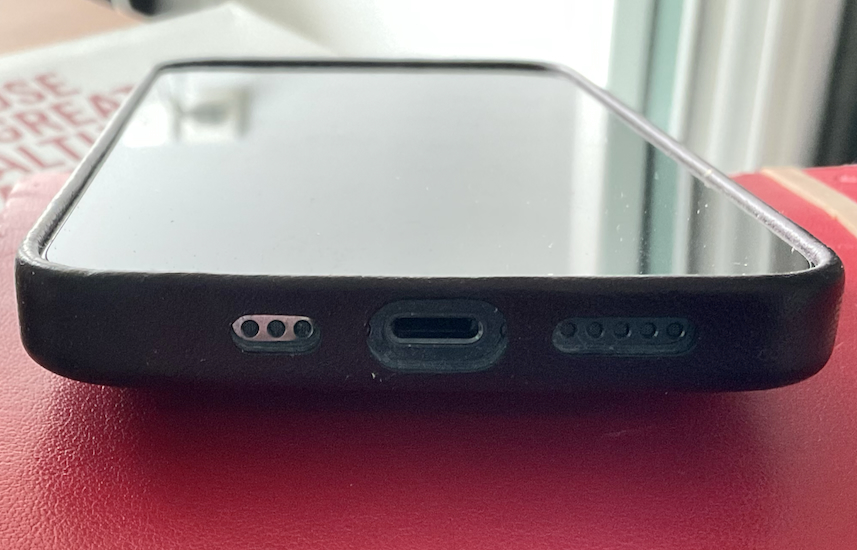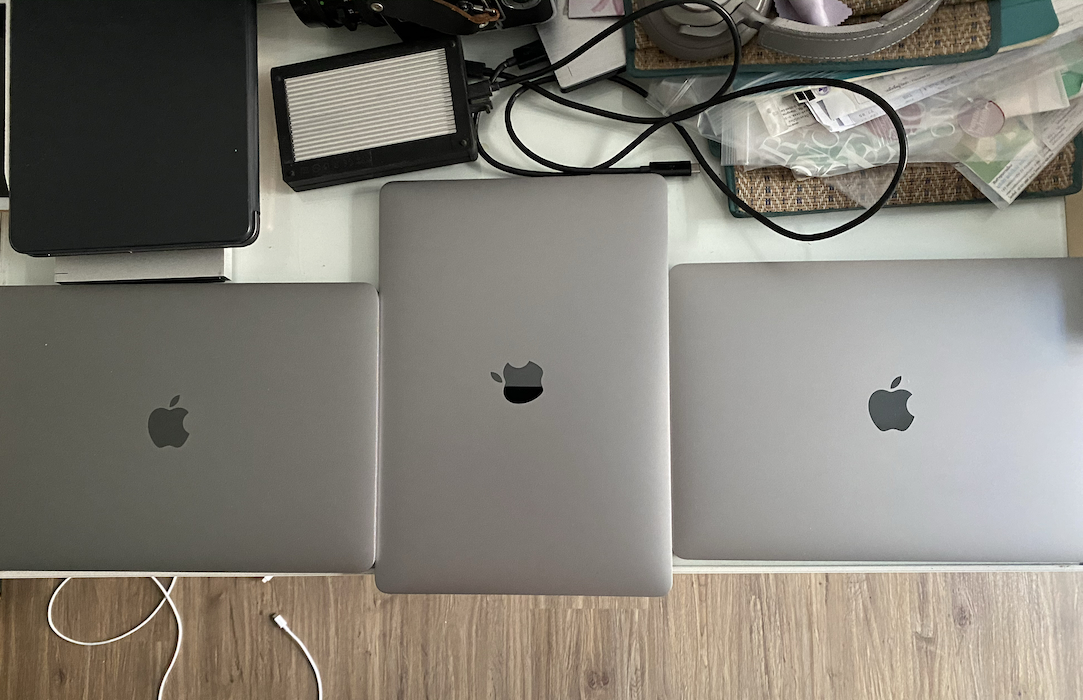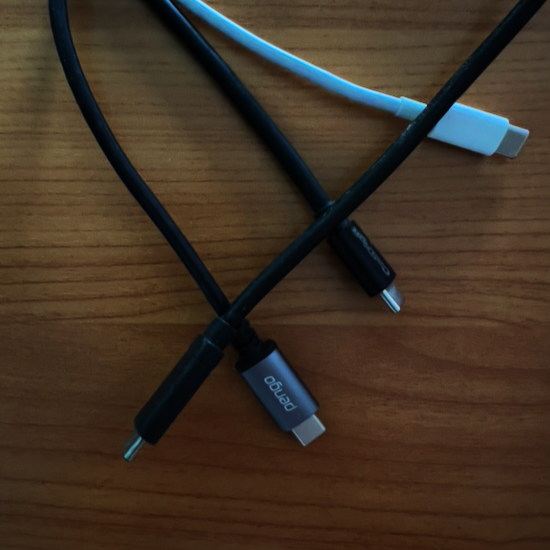|
|
Monday Review: CSAM Lurking in the Background; USA Tech Industry versus EU; When the Wrong People are in ControlBy Graham K. Rogers

CineStill 400D - Screenshot from CineStill site
 CSAM Process - From Apple Technical Summary (August 2021)
Last week, Apple announced that not only were US users to be involved, but the ability to "scan messages sent to and from children will soon hit British iPhones" (see below). That was a part of the overall CSAM rollout that did not have so much negative publicity, as it was directed at young people who may be sent, or send (under persuasion or for innocent reasons) inappropriate images. This is done on the phone and then suspect images are blurred out while no information about the image is sent to Apple. It also appears from the article (Alex Hearn, Guardian) that no information is sent to a parent. CSAM image scanning is still on hold. In his newsletter, Mark Gurman writes, "The feature will be arriving in the U.K., Canada, Australia and New Zealand."
 Lightning Port on iPhone 13
Apple does have considerable control over the app distribution but the intentions behind that when the App Store was first set up have kept iPhone users far safer than those that use other systems. Will the EU go the whole hog and insist that Apple provides an option to run Android on the iPhone? One also hopes that the EU will be taking a look at Meta which, after criticizing Apple for its 15-30% fees has brazenly announced that its Meta fees will reach 47.5% in some cases: that is 30% for its Quest Store and "a further 17.5% cut as its Horizon platform fees" (MacDaily News). The Meta quarterly report is on Wednesday this week (27 April) and it will be interesting to see if there is a return in investor confidence after its massive one-day share crash of $240 billion in February.
If sideloading is offered, I will ignore it and use only apps that run in the Apple ecosystem. I have seen enough problems with other systems to be unwilling to let my guard down. Note, however, that I do allow this on the Mac for a number of reasons: I always did (and so did many others); Apple does have guards in place, although they are relatively easy for users to circumvent; I install only software from sources that I trust, some of which I have been using for years (in some cases before OS X/macOS). There are fewer users on the Mac while many using iPhones and Android have less knowledge about avoiding problems. My own family are a case in point. Having been given an iPad which had already been set up (and which still allows access by the family member who did this), they have passively allowed friends and other members of the family to make changes, without realizing what is being done; and then not understanding why the iPad works differently. I have finally persuaded them to turn on the backup and they intend to visit the nearest Apple store. I think they should wipe the device and start again, then not let anyone else near it. Although that is anecdotal, there are hundreds of stories of others allowing friends, children, neighbors to borrow their phones or tablet devices and do damage. How many times, for example, have children been able to run up bills of hundreds or thousands of dollars when playing games without the parents realizing? Any way that Apple can help users protect their devices should be supported, not sacrificed for economic reasons.
Although CODA is still unavailable here despite being listed in the iTunes Store, I was pleased to see that Kenneth Branagh's Belfast is now listed in the local iTunes Store as a preorder. I linked to that right away and look forward to it's digital release on 4 May. How did so few people not see through the facade that a company (albeit one based on a good idea) was being run on? WeWork is still operating, so the idea was not all bad. Overconfidence and dodgy foundations are prime causes. Remember Enron? I also remember the giant TWA and PanAm airlines that disappeared, DeLorean (unconventional management and a problem product), a number of banks and Wall Street firms, Kodak (not seeing where the market was going, despite being one of the innovators of digital camera technology). There is a list of disasters on a Yahoo! News page authored by Gabriel Olya. Other major crashes include the Dutch tulip industry in the 18th century (Adam Hayes, Investopedia), but more recent ones are Meta's one day loss of $240 billion: the largest one-day wipeout in US corporate history (Isabel Asher Hamilton, Business Insider). Taking these as comparisons, Netflix is nowhere near a crash risk. However, we are told that Netflix has lost many subscribers in recent times which may be partly because many countries are returning to work. Even though that may be a little premature, it means fewer people are staying home so watch TV less. Of course there was a hit to the share price, sending it down significantly earlier this week. The pundits are emerging and there are suggestions as to how Netflix can be saved: this presumes that it is doomed, but like Apple that we are often told is at death's door, there is much life left in this corporate body (see below). One suggestion that caught my eye repeatedly as it appeared in many online sources was the idea that to attract more subscribers, Netflix should start to include advertisements. I am aghast. The lack of advertising is one off the attractions to me; and the addition of this to one service I had subscribed to hastened my move to Netflix in the first place. The Economist takes a look at the problem. At $15.49 a month one can see there is a certain attraction to the subsidies that advertising would bring, perhaps even allowing a reduction in the monthly fee. However, when this was done for terrestrial services in the past, there has been no fee reduction. Here, where subscribers only see a small percentage of Netflix programming compared with the USA the fee is lower. I pay 279 baht each month ($8.20), although if that is for only around 20% of what US subscribers see that is not proportional. With only 41 percent of Netflix users paying for their own account (Comparitech) there are obvious losses being made here. Cutting the numbers who are not paying would be a good step to take and the company has been looking at ways to do this, but cutting off some accounts is possible and that would bring more pain initially. The Guardian (Vanessa Thorpe) takes a look at this in a reasonable and balanced comment, and notes that worldwide, "the company has 221.64 million subscribers in more than 190 countries" so that 200,000 (admittedly with more to come) is a tiny percentage. The problem for investors, and particularly Wall Street, that any reduction means there is no growth and that is seen as disaster as we have seen with so much punditry on Apple.
To non-investors like myself it looks good of course: Apple keeps going, although I am always aware that what goes up must come down (potentially). The problem for financial pundits is that this affects growth, a figure that shows what they think: that all companies must keep growing. We have noticed over the years that Apple is not like other companies: in the way it develops products and new markets; and in the way it often produces record quarterly figures, only for the shares to be brought down by hand-wringing from Wall Street who only look as far as the next quarter.
 MacBook Pro versions and MacBook Air
Graham K. Rogers teaches at the Faculty of Engineering, Mahidol University in Thailand. He wrote in the Bangkok Post, Database supplement on IT subjects. For the last seven years of Database he wrote a column on Apple and Macs. After 3 years writing a column in the Life supplement, he is now no longer associated with the Bangkok Post. He can be followed on Twitter (@extensions_th) |
|


 If these EU changes are implemented, I will deal with the cable issue easily as I have more than enough USB-C and Thunderbolt 3 and 4 cables. The issue of sideloading and payments to developers are other matters.
If these EU changes are implemented, I will deal with the cable issue easily as I have more than enough USB-C and Thunderbolt 3 and 4 cables. The issue of sideloading and payments to developers are other matters.
 I saw the final episode of WeCrashed this week. Sometimes the wrong people are in control. At the end of the final episode there was an old, recorded interview with Adam Neumann one of the founders, who is played by Jared Leto. It was uncanny how well Leto had captured Neumann's voice. That problem with the wrong people being in charge also comes through in a different way in the delightful AppleTV series, Slow Horses, with Gary Oldman. I am enjoying this immensely. Apple is also developing several more series to expand the service.
I saw the final episode of WeCrashed this week. Sometimes the wrong people are in control. At the end of the final episode there was an old, recorded interview with Adam Neumann one of the founders, who is played by Jared Leto. It was uncanny how well Leto had captured Neumann's voice. That problem with the wrong people being in charge also comes through in a different way in the delightful AppleTV series, Slow Horses, with Gary Oldman. I am enjoying this immensely. Apple is also developing several more series to expand the service.
